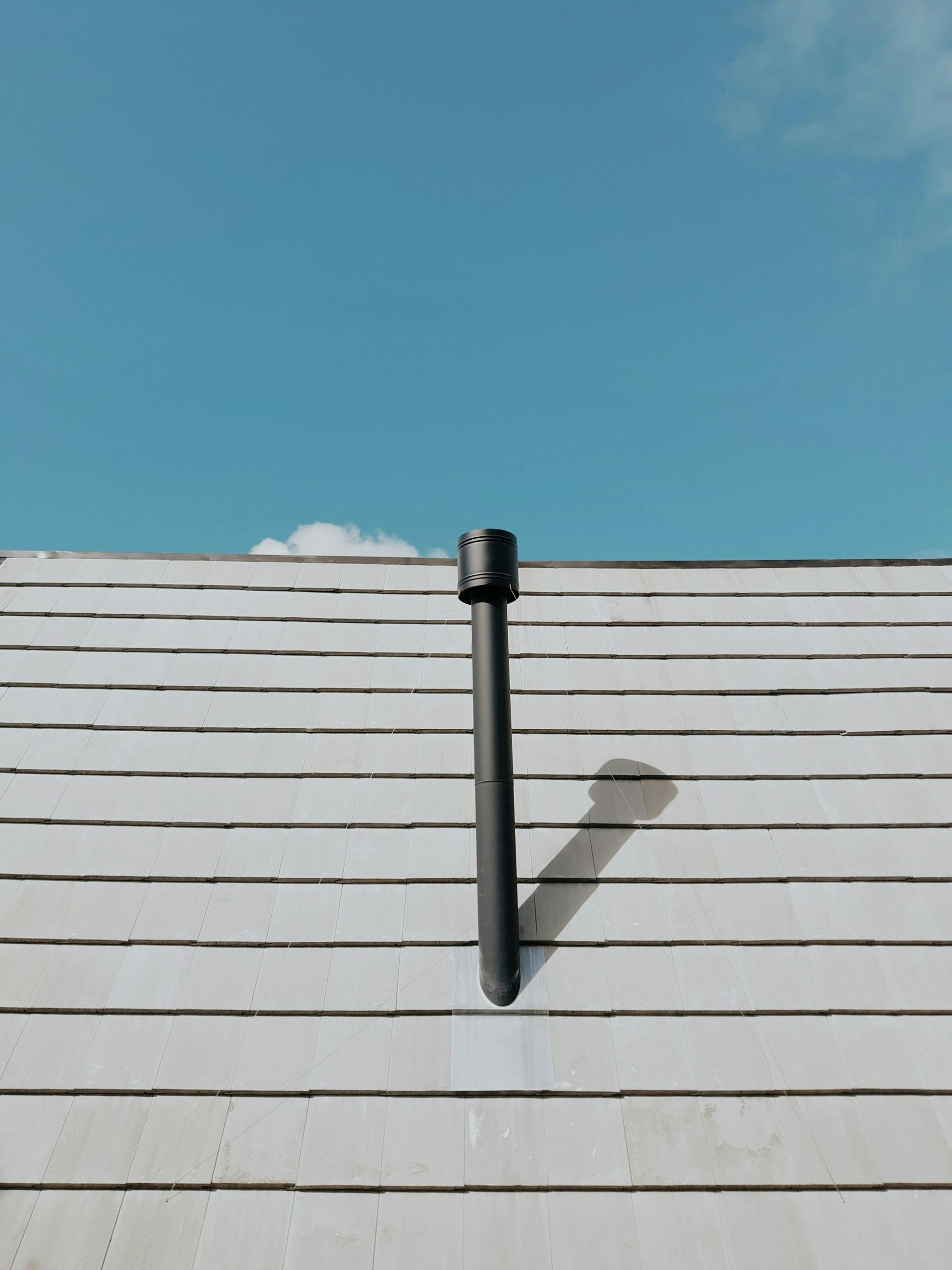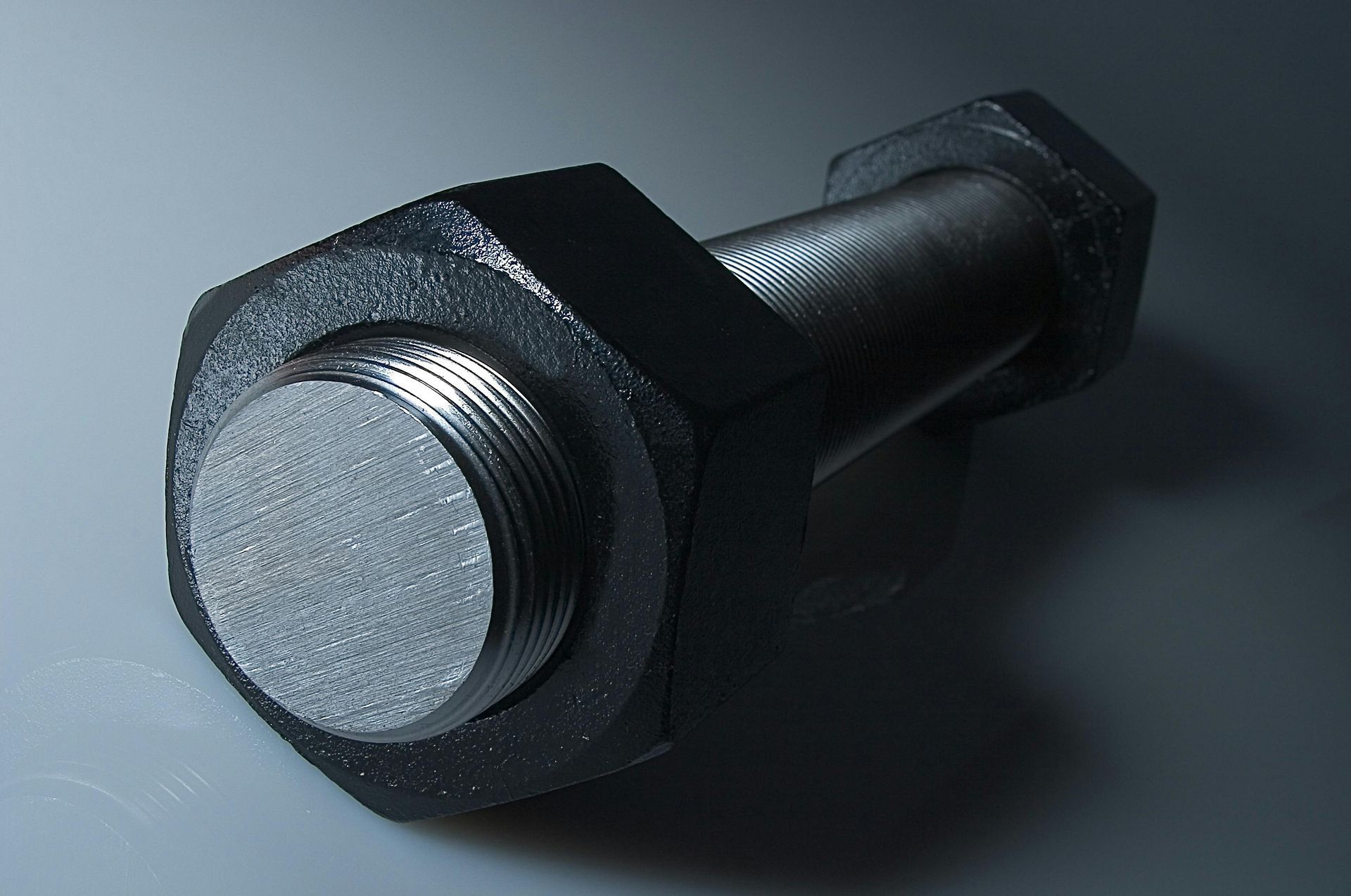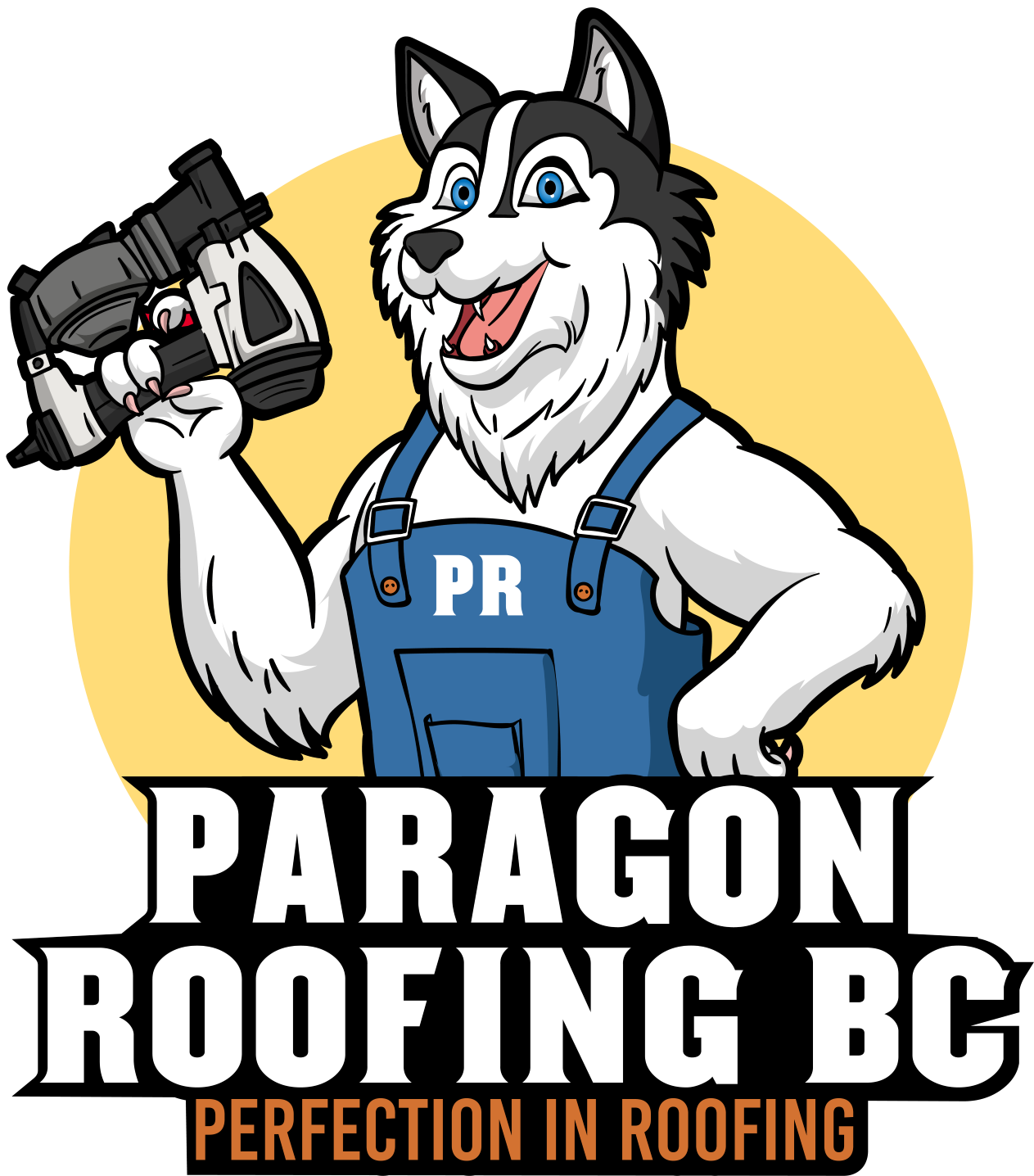In Vancouver rain and wind, a metal roof over solid decking with high-temp underlayment, proper clip spacing, attic insulation, and sealed edges is about as quiet inside as a typical asphalt roof—usually within a few decibels of normal conversation. The assembly—not the metal—decides loudness. ([1], [2])
acoustically optimized metal roofs Vancouver · low-slope metal feasibility
Need help with roofing in Vancouver ? Get a same-week assessment.
What we really mean by “loud” (quick decibel sanity check)
Decibels (dB, usually A-weighted as dBA) are logarithmic. A +3 dB change is a just-noticeable increase for many listeners; +10 dB sounds about twice as loud. Common reference points: a quiet library ~40 dBA, rainfall ~50 dBA, normal conversation ~60 dBA. Extended exposure risk begins around 85 dBA(workplace guidance), far above what rain on a house produces. ([3], [2], [4])
In other words: if you can hear a calm conversation across the room during a downpour, the noise is living in the 40–60 dBA neighborhood—comfortably normal for homes. ([2])
How labs measure “rain on a roof”—and why that matters here
Acousticians don’t wait for a storm. They simulate rain in a lab using ISO 140-18(now carried forward into ISO 10140 amendments), which pours controlled “heavy” and “intense” artificial rain over a roof specimen. Test gear logs the resulting sound in the room underneath; outputs are commonly reported as A-weighted levels you can compare to everyday sounds. ([5], [6])
A useful translation: “ heavy rain” in ISO parlance is on the order of 15 mm/h; “ intense ” is ~40 mm/h. Those rates bracket the short, vigorous bursts we see on the South Coast during frontal passages and atmospheric rivers—even if our daily averages look tame. ([7])
What the best-known tests actually found (metal vs asphalt)
Multiple industry and technical summaries—even when you throw out the marketing gloss—converge on the same headline: metal over a solid deck with underlayment is only modestly louder than shingles under artificial rain, and the difference is small enough that many listeners can’t perceive it.
- A widely-cited Luleå University (Sweden) program—summarized in trade tech sheets—reports ~46 dBA under rain for asphalt shingles over a typical deck versus ~52 dBA for metal over a similar deck ( +6 dB). With metal installed over open framing(like a barn), the same rain jumps to ~61 dBA —that “tin roof” sound people remember. ([8])
- A dedicated rain-impact test on stone-coated metal roof tiles (European lab protocol) logged A-weighted levels beneath the roof between ~61 and 69 dBA, depending on underlay and damping layers—the quietest setup used a felt/double underlay. Translation: details matter. ([9])
- Guidance for insulated metal panel and twin-skin assemblies tested to ISO 140-18 points to typical intense-rain levels around ~62 dB for insulated panels and ~50 dB for optimized twin-skin builds with heavier mass and absorption. Those are lab roofs, not cedar-lined cabins—but they show the range assemblies can hit when you add damping and mass. ([10])
- Canada’s sheet-steel institute summarizes the punchline plainly: with today’s insulation and ceilings, most homeowners don’t notice a difference in rain noise between steel and shingles. That matches what the decibel numbers imply. ([1])
Put simply: in a standard Vancouver home (solid plywood deck, synthetic or high-temp membrane, attic insulation, drywall lid), metal vs asphalt is a small difference—typically a few dB either side of quiet-conversation territory. The barn-loud myth comes from open-framed outbuildings with nothing but air beneath the panel.
“But Vancouver gets real storms”—do those lab rates map to our rain?
Yes. Vancouver’s annual precipitation at YVR is around 1.2 m, but what stresses acoustics (and roofs) is short-duration intensity plus wind-driven rain. Metro Vancouver’s IDF work packages show that 5- to 60-minute intensities for design storms land in the same ballpark as ISO’s “heavy/intense” categories, especially during atmospheric rivers. Meanwhile, BC Housing/BCIT measured how wind pushes rain sideways and upward at building surfaces—the condition that makes tight closures and membranes essential. ([11], [12], [13])
The upshot: the same assemblies that keep water out also dampen rain noise —because mass, airtightness, and decoupling stop both water and vibration. ([14])
Where rain noise really comes from (and how to shrink it)
1) The roof surface
as a drum… or not.
Bare metal over open framing behaves like a sounding board; raindrops flex the sheet and broadcast sound. Set that metal onto solid sheathing
and underlayment, and you’ve just constrained the sheet and added damping. Add attic insulation and a drywall lid, and most of the “drum” vanishes.
2) Damping & underlays.
Heavier, softer layers convert vibration to heat. Lab reports show underlays and acoustic membranes can shave several dB
off rain noise, with felt/double layers often outperforming single thin films. Products tested to BS EN ISO 140-18
exist specifically for profiled metal. ([9], [15])
3) Mass and airtightness.
A rigid, well-sealed ceiling with insulation over top blocks airborne energy leaking into rooms. As a rule of thumb, every doubling of mass yields a few dB improvement across much of the spectrum; more attic insulation also absorbs
energy that gets past the deck. (General acoustic principle; see FAA/EPA/WHO context for decibel behavior and typical indoor attenuation with windows shut.) ([16], [3])
4) Clips, seams, and closures.
For standing seam, manufacturer-rated seam locks, butyl in the lock, and eave/ridge closures
do double duty: they resist wind-driven rain and reduce flanking paths for noise. Ridge vent components with external baffles
help keep both water and wind-borne noise from coupling into the attic volume. ([5])
5) Above-sheathing ventilation (ASV).
A thin air space(battens/counter-battens) under the metal creates a mechanical break. It’s famous for cutting summer heat gain, and it also reduces structural coupling
—so less impact energy reaches the deck. (ASV is an assembly choice; its acoustic benefit piggybacks on the same decoupling that helps with heat.) ([5])
So… how loud is rain on a Vancouver metal roof, in real terms?
Contextual ranges you can expect indoors, based on published lab measurements of roof elements under heavy/intense artificial rain and on industry summaries of in-situ experience:
- Metal over open framing (sheds, carports): often low 60s dBA under vigorous rain—clearly audible and “barn-like.”
- Metal over solid deck + underlayment, finished attic below: commonly high-40s to low-50s dBA — close to quiet conversation and very similar to many asphalt assemblies. ([8])
- Metal tile/panel with acoustic underlays: low-60s down toward ~60 dBA in heavy artificial rain, depending on underlay; add mass/absorption below and rooms get quieter still. ([9])
- Optimized twin-skin/insulated panel roofs (commercial style): lab intense-rain levels ~50–62 dB beneath the roof element; houses with drywall/insulation stacks can achieve comparable results. ([10])
All of those numbers sit orders of magnitude below any hearing-risk threshold and in the realm where conversation is easy—especially with doors/windows closed (which typically add ~20+ dB of indoor attenuation compared to outside). ([4], [16])
Vancouver weather nuance: intensity, duration, and wind-driven rain
Our climate’s “noise personality” isn’t just how hard it rains; it’s also how long, how oblique, and how the roof geometry channels drops into valleys and edges. BC Housing’s instrumented work showed how wind boosts façade wetting; on roofs this translates into higher impact rates on windward slopes and eaves. A metal roof with open-metal valleys, sealed laps, and proper closures keeps water out—and that same tightness keeps the sound paths short. ([13])
Short-duration design data (IDF) for Metro Vancouver confirms that 5–60-minute intensities used for drainage design overlap ISO’s heavy/intense regimes. That’s why lab numbers are relevant to what you hear in a Kitsilano squall or a North Shore atmospheric river—though wind orientation and your specific roof shape will shift the exact loudness from room to room. ([11], [12])
A homeowner sound-check you (or your contractor) can replicate
Goal: quantify rain noise inside a living room or bedroom during a real storm and compare it to everyday sounds.
- Pick your rooms. One on a windward slope, one on the lee. Close windows/doors; set HVAC to constant fan (if applicable) so background is steady.
- Measure background. On a dry evening, use any Class-compliant sound level meter or a well-reviewed phone SLM app with A-weighting and slow time constant. Note a 60-second average ( Leq).
- Measure during rain. When a genuine downpour hits (ideally with radar intensities showing “moderate to heavy”), repeat the Leq in the same rooms for 60–120 seconds.
- Compare. Subtract the dry baseline. If the indoor rain Leq sits ~45–55 dBA, you’re essentially at conversation-level sound. If you see ~60+ dBA in living spaces, check for open-framed additions, skylight drums, or thin ceilings.
- Document orientation. Note wind direction and which slope is windward—expect a couple of dB higher on that side during wind-driven rain. ([2], [13])
Tip: If you’re doing pre- and post-retrofit comparisons, repeat under similar storm intensities (use the City of Vancouver’s updated IDF framework as context for typical short-duration rates). ([17])
Building (or retrofitting) for quiet in Vancouver—my field checklist
- Solid deck + quality underlayment: On metal, the single biggest difference from that “tinny” sound is plywood/OSB sheathing with a robust synthetic or self-adhered membrane. It adds stiffness and damping.
- Acoustic underlay or felt(choose assemblies rated for your panel): Under ISO rain testing, added layers routinely trim several dB. Match the product to your profile; some membranes are built specifically to quell rain-on-metal resonance. ([9], [18])
- Seams/closures by the book: For standing seam, taller mechanical locks with butyl in the hem, and eave/ridge closures, limit both water and sound leakage in wind-driven rain. ([5])
- Attic airtightness + insulation: Air leaks around light cans, chases, and hatches let sound and moisture travel. A tight, insulated lid is an acoustic and durability upgrade in one. (Safety/comfort thresholds: conversation ~60 dBA, risk ≫85 dBA.) ([2], [4])
- Above-sheathing ventilation (ASV) where appropriate: Battens create an air break that reduces coupling (acoustically) and heat (thermally). Yes, it’s primarily a moisture/thermal detail—but it helps rain noise too. ([5])
- Valleys & edges: Open-metal valleys over continuous liners and well-sequenced drip/edge metal move torrents quietly(less splashy turbulence) and keep water out—making the home quieter under peak flows. ([14])
Frequently asked (snippet-ready) answers
Is rain on a metal roof actually loud inside a Vancouver house?
Typically no. With solid decking, underlayment, and an insulated ceiling, indoor levels during “heavy” rain sit around conversation-level
—often within a few decibels of an asphalt roof. Open-framed structures are the noisy outliers. ([1])
How do lab “rain noise” tests relate to real storms here?
Labs use ISO 140-18/10140
artificial rain at ~15–40 mm/h. Metro Vancouver short-duration intensities overlap these rates, so the lab results are meaningful
for our squalls and atmospheric rivers. ([7], [11])
What numbers should I expect inside?
Published tests report ~46 dBA(shingles over deck) vs ~52 dBA(metal over deck) under heavy artificial rain— a +6 dB difference, often below perceptibility for many listeners. Open framing can hit ~61 dBA. ([8])
Can membranes or underlays really make a difference?
Yes. Rain-impact testing on profiled metal shows felt/double underlays
dropping several dB compared with bare panels. Acoustic membranes for profiled metal are tested to BS EN ISO 140-18. ([9], [18])
What about hearing safety?
Home rain noise is orders of magnitude below
occupational limits; 85 dBA
is the 8-hour workplace guidance threshold. Indoor rain levels in houses are typically 40–60 dBA. ([4], [2])
Case-by-case nuance (why two similar homes can sound different)
- Geometry: Big, flat pans over long spans can have different resonance than tight rib spacing. Valleys concentrate drop energy; open metal liners often sound smoother than shingle-cut valleys that “splash.” ([14])
- Orientation: Windward slopes take the brunt of wind-driven rain, so expect a modest uptick in rooms beneath those slopes during storms. ([13])
- Ceiling construction: A 1-layer ½-inch gypsum lid with thin insulation will transmit more sound than a 5/8-inch lid with deeper insulation and airtight penetrations. General acoustics + mass law apply here, just like walls. ([16])
- Skylights: Their thin panes and wells can act like sound portals compared with the surrounding insulated deck; it’s common to “hear the skylight,” not the roof. (Fits what installers and test summaries note about assemblies).
If you’re planning a metal roof in Vancouver and want it quiet
Assembly recipe (steep-slope homes):
- Standing seam panels over solid sheathing, atop a high-quality synthetic or self-adhered underlayment.
- Mechanically locked seams with sealant where the profile calls for it; eave and ridge closures matched to your rib spacing.
- Attic: sealed ceiling plane; insulation to modern targets; continuous soffit-to-ridge ventilation for drying (and more acoustic absorption above the lid).
- Valleys/edges: open-metal valleys over continuous liners; drip/edge metal sequenced shingle-fashion to prevent splash/backwash paths.
- Optional quieting upgrades: acoustic underlayment/membrane under the panels; ASV batten/counter-batten cavity. ([9], [18])
Retrofit note: If you’re re-roofing over existing shingles(where permitted by code and the panel manufacturer), that “bonus” mass and the air films between layers often make the metal install quieter than the old roof was. (This lines up with multiple industry tech notes and the physics of mass + damping).
Why this aligns with Vancouver’s broader building-science playbook
Everything that quiets rain— mass, airtightness, decoupling, absorption —is also what resists wind-driven rain, speeds drying between storms, and stabilizes indoor comfort. That’s why local guidance and standards harp on closures, membranes, and robust under-assemblies: they aren’t just about leaks—they’re quietly buying you decibels back, room by room. ([13])
Bottom line
A metal roof does not consign you to thunderous nights. In Vancouver’s marine climate, a modern metal assembly— solid deck, quality underlayment, airtight insulated lid, correct clips and closures, and smart valleys/edges —lands rain noise right around conversation level inside, often indistinguishable from asphalt to most ears. If you want it quieter still, you have proven levers: acoustic underlays, heavier ceilings, and (when design allows) above-sheathing ventilation. That’s not sales talk; it’s what standardized rain noise tests and regional storm data together predict you’ll hear at home. ([9], [7], [11])
acoustically optimized metal roofs Vancouver · low-slope metal feasibility
Need help with roofing in Vancouver ? Get a same-week assessment.
—
References (for verification, not included in word count)
- Is Rain on a Steel Roof Louder than on an Asphalt Roof?
- Levels of Noise in Decibels (dB)
- WHO — Safe listening
- CDC/NIOSH — Understanding Noise Exposure Limits
- ISO 140-18 (ISO 10140 amendments)
- Accuracy of prediction methods for rain noise levels
- Rain noise definitions & occupant responses
- Luleå summary & dBA examples
- Metrotile — Rain Impact Testing Report
- CA Group — Acoustics (ISO 140-18)
- Metro Vancouver — Regional IDF Curves
- ECCC — Engineering Climate Datasets
- BC Housing — Wind-Driven Rain Study
- BRE — Rain noise
- SRS — Raincheck brochure
- FAA — E Basics of Noise
- City of Vancouver — IDF update
- SRS — Acoustic membranes (Raincheck)
- ISO 140-18 (sample)




